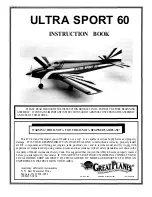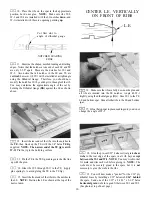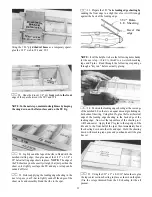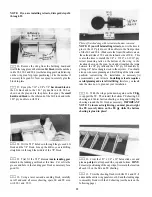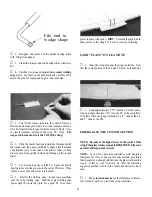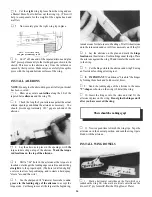
Please inspect all parts carefully before starting to
build! If any parts are missing, broken or defective, or if
you have any questions about building or flying this
airplane, please call us at (217) 398-8970 and we'll be glad
to help. If you are calling for replacement parts, please
look up the part numbers and the kit identification num-
ber (stamped on the end of the carton) and have them
ready when calling.
INTRODUCTION
Congratulations! Thank you for purchasing the Great
Planes Ultra Sport 60! Jim Feldmann's original design was
featured as a construction article in the August, 1989 issue of
RC Modeler magazine, and has been hailed by many as "the
best sport flying airplane ever''! The design starts with the
legendary "Kaos" wing platform, and features modem
styling and state-of-the-art construction techniques. The
result is an ultra-stable, ultra-smooth flying airplane that does
what you want it to, no more and no less.
The Ultra Sport 60 is easy to build, totally predictable,
smooth-flying and has very docile stall characteristics, mak-
ing it the ultimate sport airplane for the modeler who wants to
fly with a higher degree of precision. Because it naturally
tracks through maneuvers better than other sport airplanes,
you'll fly belter when you're flying an Ultra Sport 60.
This is not a beginner's airplane! While the Ultra
Sport 60 is easy to build and flies great, we must discourage
you from selecting this kit as your first R/C airplane. It is fast,
highly maneuverable, and lacks the self-recovery character-
istics of a good basic trainer such as the Great Planes PT
Series airplanes. On the other hand, if you have already
learned the basics of R/C flying and you are able to safely
handle an ' 'aileron trainer'' airplane such as the Great Planes
Trainer Series or Big Stick Series airplanes, the Ultra Sport
60 is an excellent choice.
4. You mustproperly install all R/C and other components
so that the model operates properly on the ground and in the
air.
5. You must test the operation of the model before the first
and each successive flight to insure that all equipment is op-
erating, and you must make certain that the model has
remained structurally sound. Be sure to check the nylon
clevises and horns often, and replace if they show signs of
wear.
6. You must fly the model only with the competent help
of a well experienced R/C pilot if you are not already an
experienced and knowledgeable R/C pilot at this time.
Note: We, as the kit manufacturer, can provide you with a top
quality kit and great instructions, but ultimately the quality
and flyability of your finished model depends on how you
build it; therefore, we cannot in any way guarantee the
performance of your completed model, and no representa-
tions are expressed or implied as to the performance or safety
of your completed model.
Remember: Take your time and follow directions to end
up with a well-built model that is light, straight and true.
INSTRUCTIONS IN BOXES LIKE THIS ARE
VERY IMPORTANT AND SHOULD BE FOL-
LOWED CAREFULLY
PRECAUTIONS
1. You must build the plane according to the plans and
instructions. Do not alter or modify the model as represented
by the plans, as doing so may result in an unsafe or unflyable
model. In a few cases the plans and instructions may differ
slightly from me photos. In those instances you should
assume the plans and written instructions are correct
2. You must take time to build straight, true and strong.
3. You must use a proper R/C radio that is in first class
condition, the correct sized engine and correct components
(fuel tank, wheels, etc.) throughout your building process.
COMMON ABBREVIATIONS USED IN
THIS BOOK AND ON THE PLANS:
Elev = Elevator
Fuse = Fuselage
LE = Leading Edge (front)
LG = Landing Gear
Lt = Left
Ply = Plywood
Rt = Right
Stab = Stabilizer
TE = Trailing Edge (rear)
Tri = Triangle
= Inches
3

